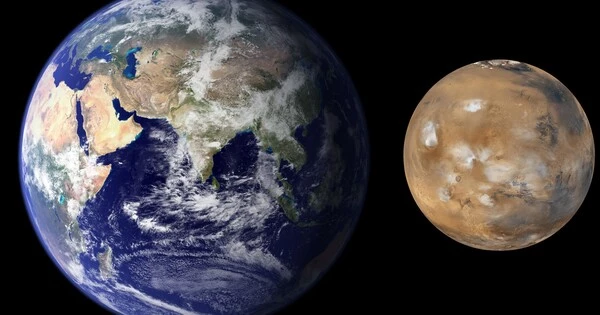Many people are delighted about a sunspot’s quick and fast expansion. Sunspot AR 3038 is on the side of the Sun that is facing us and has enough magnetic to cause a strong flare to be released. It has recently grown to be three times the size of Earth. Even if it flared—and it is already traveling away from the Earth’s direction—Spaceweather.com believes it might perform an M-class flare based on information from the Solar Dynamic Observatory, so it is unlikely to cause much harm. Medium-sized M-class flares, particularly in polar locations, can occasionally result in a momentary radio blackout.
The sunspot is indeed large, but in recent years, people have become more visible. One of the largest was discovered in 2003 and had a Jupiter-sized diameter, or about 11 times the size of the Earth. Even while this sunspot is still a tiny speck in comparison, seeing it change is still quite fascinating. As we approach the peak of the Sun’s 11-year cycle, activity is increasing. Only one day without sunspots on the solar surface has occurred so far this year, which is a certain sign that solar activity is intensifying.
The Solar Dynamics Observatory (SDO) data center at Stanford University has lost power due to a wildfire in California. As a result, SDO is not sending us any photos. You can support! So that we can see what the sun appears like right now, readers are invited to submit their own full-disk white light photographs of the sun. Send us your photos here. A TRAIN OF CLASSIFIED SATELLITES: Analysts noticed a problem when SpaceX launched the Globalstar communications satellite on June 19th. The Falcon 9 rocket could not be fully fueled by the Globalstar. There must be more within. The secret contents, a train of four new classified satellites, were just seen on camera by Marco Langbroek of Leiden, the Netherlands.
According to Langbroek, “These objects (USA 328 – 331) were secretly launched with Globalstar FM15 on June 19, 2022.” “The brightness of USA 329, the second item in the “train,” is slowly fluctuating, which would mean it is in motion. It fluctuates between magnitude +5 and +10 with a half-minute duration. The brightness of the other payloads, which are about magnitude +7/+8, is constant.” A chunk of the Falcon 9 rocket wreckage that sent the satellites into orbit is the considerably brighter fifth item behind the train. According to Langbroek, the Falcon 9 debris piece has a magnification of +4.5 to +5.















